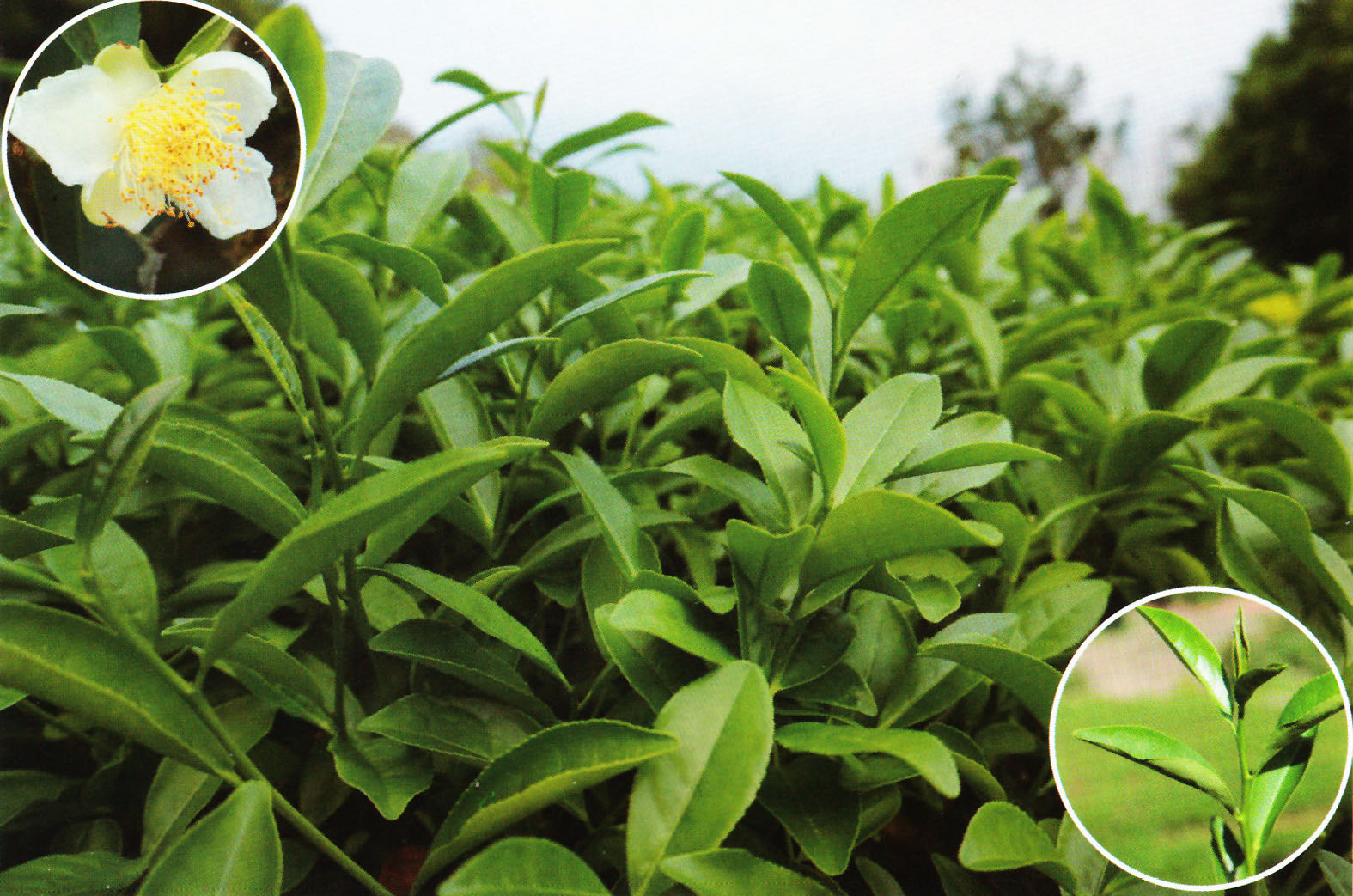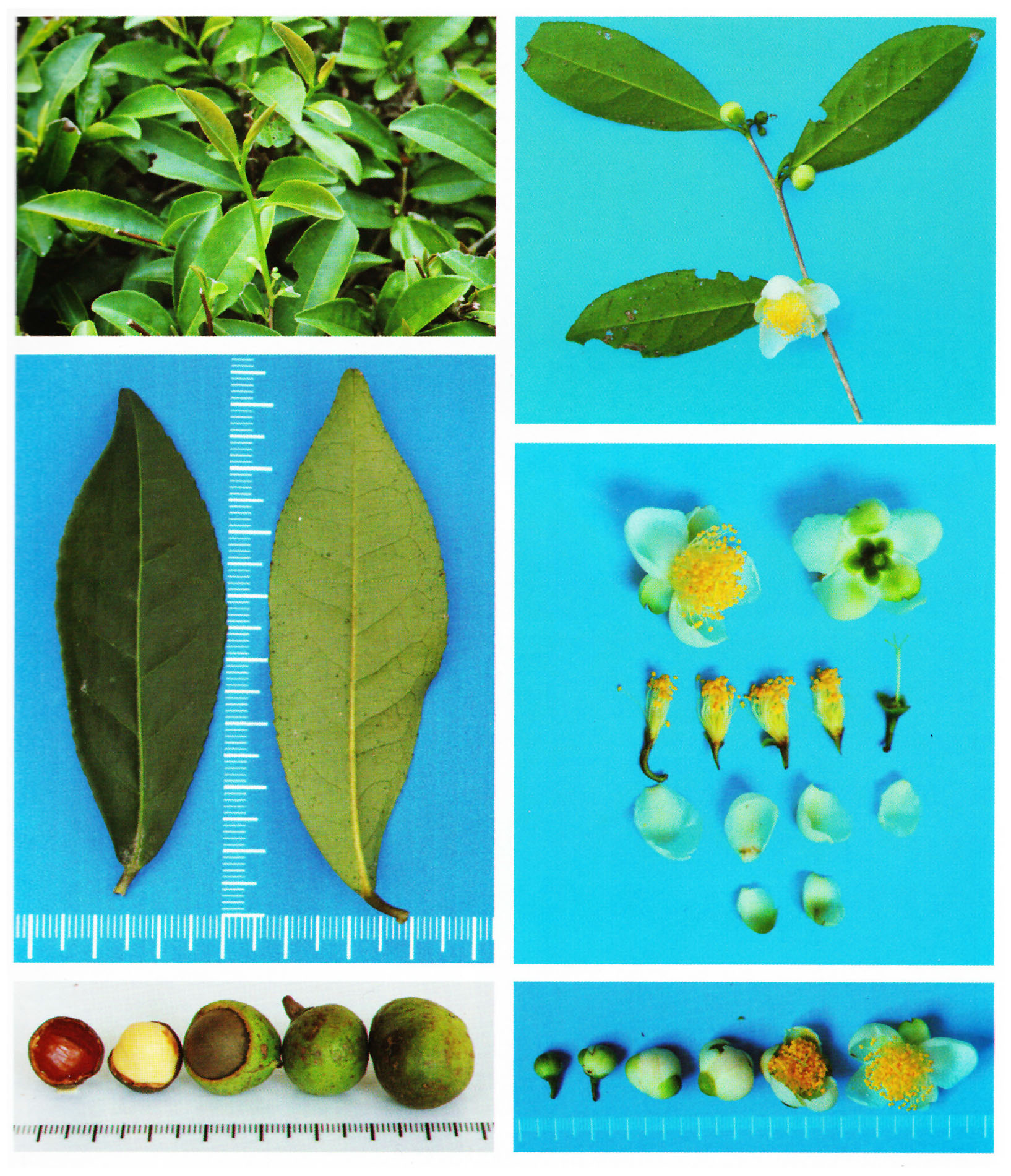Rou Gui (肉桂)
Rou gui is one of the most popular cultivars in Wuyishan. It has been grown for more than 100 years, and was officially standardized in 1985. The name means "cassia" or "Chinese cinnamon", and is known for having a distinct spice. Rou gui accounts for about 29% of tea plantings in Wuyishan [2].
View Rou Gui in Old Ways Tea Shop
Growing Characteristics: Above average size with half open growth. Rather dense branching. Oval shaped leaves curl inwards from the sides, generally reaching 7.8 to 9.4 cm in length and 2.8 to 3.5 cm in width. Leaves have a dark green color, fairly smooth edges with small ridges, and an abundant luster. Flowers are 3.0 to 3.5 cm across with 6 or 7 petals. Seeds are spherical with a brown seed coat. [1]
Tea Character: Rolls well into tight cords, with a deep color. Aroma is rich, sharp, and pungent. Has a mellow rich sweetness. Soup brews to a clear orange color. Spring tea picked one bud and two leaves has polyphenol concentration 17.7%, Amino acids 3.8%, caffeine 3.1%, and 52.3% water. [1]

The differences in growth habit are clearly seen when different cultivars are placed side by side. Below, are three different common types of tea tree for sale at a street market. The Rou Gui with curled leaves is likely the second easiest to identify. Bai Ji Guan (not pictured here) with light yellow leaves takes the prize.

Some regions are known for a specific cultivar. The most famous place to grow rou gui is Niu Lan Keng (牛栏坑). Since the 'rou' of rou gui (肉) is the same character as that used for meat, the rou gui grown in Niu Lan Keng is frequently called "niu rou" (牛肉) - literally "cow meat", ie: beef. Since beef is one of the more expensive meats, this is a particularly fitting name.

References
- Scans and figures from "Illustration of Chinese Oolong Tea" pages 110 and 111.
- Additional figures on total planting from: Discussion on the Causes and Production of Excellent Wuyi Rou Gui
